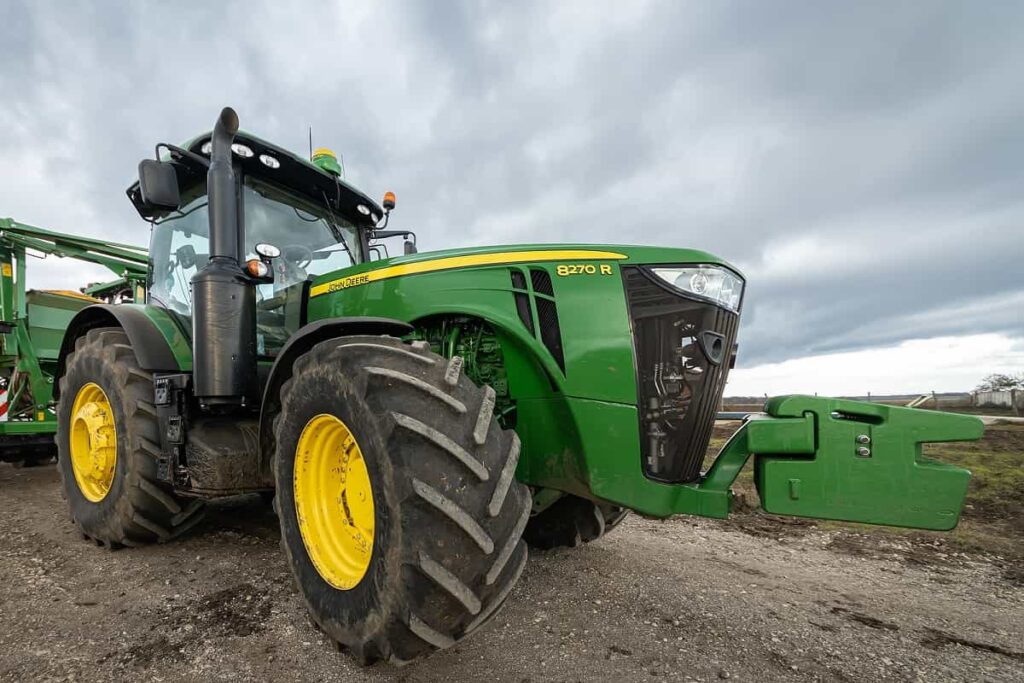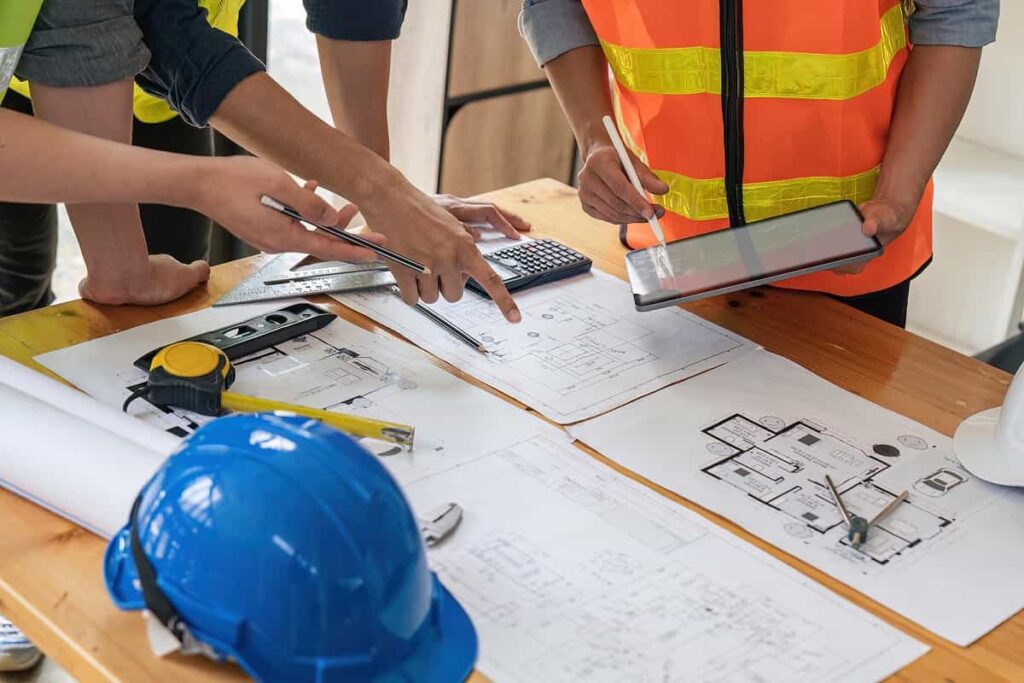Robotic Inspection for Non-Magnetic Surfaces
Table of contents

Any truly disruptive technology will always have some controversy surrounding it that provokes people’s emotions. Gene editing at the germline, DNA testing for IQ, and brain to computer interfaces, are all heavily debated topics by people with various motivations. For artificial intelligence, the controversial topic du jour is to yell “bias” whenever the algorithm provides a result you disagree with. Prior to that, everyone’s feathers were being ruffled by the loss of jobs that AI and robotics will potentially bring about, a topic we’ve touched on before.
If we had to get everyone to agree on which jobs we might replace with AI and robotics, a good rule of thumb would be anything that’s “dirty, dangerous, and dull.” Operating mining equipment might fall into that category. So would things like logging or commercial meatpacking. But there’s one other qualifier we might add to the “three d’s.” It’s any job where a mistake by a human could result in many deaths – or even worse, many lawsuits. For such jobs, it makes sense to employ robots that don’t make mistakes. If the robotic solution can actually do the job better than the human, you’re creating operational risk by not adopting it. Investors love these types of businesses because the product sells itself. One such company is robotics inspection startup Invert Robotics.
About Invert Robotics
Founded in 2011, New Zealand startup Invert Robotics has raised around $15 million in funding from investors that include Yamaha, Finistere Ventures, and the New Zealand Venture Investment Fund. The company was originally spun out of technology developed by the University of Canterbury School of Engineering, and their secret sauce is the “sliding suction cup method” which allows their robots to adhere to non-magnetic surfaces. It’s all based on some clever engineering that uses four “passive” suction cups to constantly make sure the 5 kilo (11 lb) robotic crawler sticks to a surface (one suction cup alone can support the robot):

In order to better understand the potentially limitless use cases for this robot, we sat down to talk with Managing Director Neil Fletcher and Director of Technology James Robertson to learn about how they first got started off in the dairy industry and where that journey has taken them.
Getting a Start in Dairy
You’ll find a number of companies out there offering inspection robots for magnetic surfaces, like the beleaguered General Electric with their “Inspection Robotics” business that caters to industries like oil & gas, or Gecko Robotics, a startup we’ve looked at before. What you won’t find are companies offering robotics inspection services for non-magnetic surfaces, aside from Invert Robotics. The need for such a solution is driven by industries where non-magnetic surfaces are more prevalent, like food & beverage and pharmaceuticals.
Stainless steel is used a lot in industries where harsh chemicals – like caustic soda – are used to clean surfaces due to its ability to withstand corrosion. That’s why you’ll see lots of stainless steel used in commercial kitchens or places where you need to maintain very hygienic surfaces. Try using harsh cleaning chemicals day in and day out on carbon steel and they’ll eat through the metal in weeks. That’s why stainless steel is commonly used for things like industrial-sized storage and processing tanks. If we’re talking dairy, cracks in stainless steel tanks or pipelines can harbor bacteria which can then make people sick. Dairy products often move from the cow to the store in 24 hours, and some bacteria require 24 hours to manifest themselves. This results in recalls which can be extremely damaging to a brand. That’s where the robots come into the picture.

Imagine if you will, hanging from a rope inside a dark container which smells of old milk while scanning the walls for cracks. Dirty, dull and dangerous are words you might use to describe the yearly task of visually inspecting industrial equipment used by the dairy industry. They say upwards of 90% of the time needed for inspections is spent on preparation, while the remaining time is spent on actually inspecting things. Workers are often falling off scaffolds, or slipping while abseiling, and these injuries are forcing the dairy industry to actively look at a different way to perform inspections. Enter Invert Robotics.
Not only can Invert Robotics do the job much faster – hours vs. days – but they can also do it for the same price and at a level of quality that’s beyond what humans are capable of. (Using 30X optical zoom, the robots can identify defects as small as 65 microns 2/1000 of an inch.) In just seven years’ time, Invert Robotics has already captured about 80% of the market share for dairy inspections in New Zealand, and 4-5% globally based on their latest estimates. Nine out of ten of the world’s largest dairy companies are now using Invert Robotics in some capacity.
Visual inspections in the dairy industry are the bare minimum required to achieve regulatory compliance, and Mr. Robertson described this as “an ambulance waiting at the bottom of a cliff.” The ability to scan more often and more accurately is one perk of using robots, but there are also other tools that can be used for even more detailed inspections. Industries involving oil, gas, and chemicals, already use such advanced methods because when things go wrong in these spaces, it involves massive explosions on the six o’clock news. That’s where Invert Robotics decided to play next.
Inspection as a Service
Inspecting equipment for cracks and fatigue is something that typically takes place at yearly intervals. Invert Robotics has built hubs in six different countries from where they deploy technicians, along with their trusty robots, to clients’ sites where they perform inspections. They don’t make recommendations, but simply tell the clients what they found, leaving them to decide what needs fixing. If you’d rather the problems were fixed immediately while your equipment is down for inspection, they can do that too. This “robotic inspection as a service” offering is also finding traction in other industries that use non-magnetic surfaces – like oil & gas.
Chevron recently announced their lofty goal of “no human entry in confined space by 2020,” which may be completely unrealistic, but that’s where they’re heading. The petrochemical industry likes to use stainless steel because it’s more durable, and that’s the direction the industry is moving towards. In the 1960s and 1970s, carbon-steel storage tanks were used, and the method of evading corrosion was painting the insides (imagine how fun that job would be). Today, pricing models have changed completely, and in many cases, it makes sense to outright replace old carbon-steel infrastructure with shiny new stainless steel infrastructure. It makes even more sense now that Invert Robotics can provide a way to inspect these non-magnetic surfaces. Given how regulated these industries are, more advanced inspection methods are often employed. Invert Robotics can handle this since each robot is able to carry a payload of up to 5 kilos (11 lbs), meaning ultrasonic inspection methods can be employed alongside visual ones. Eventually, they’ll even look to employ predictive analytics to anticipate failures.
Looking to the Future
The use cases for Invert Robotics’ technology are vast. Mr. Fletcher talked about how he once watched an airplane inspector tethered from the ceiling of an aircraft hangar, methodically inspecting 10,000 points on the surface of a plane. Spray bottle in hand, the man would first spritz some liquid onto a small spot, and then wave his magic wand over it looking for cracks – on his hands and knees. Every hour, it’s back down to the ground because worker health and safety comes first. After three days of this, the worker moves onto the next plane. (Those office workers who complain to Gwyneth in HR because someone stared at them for longer than five seconds don’t know what real discomfort is like.)
Now, several airlines are looking to use robots from Invert Robotics to perform airplane inspections. Pretty much any inspection job that’s dangerous and uncomfortable could be performed by these robots. Just think of how many wind turbine blades there are to clean now that wind power is cheaper than coal. These are just some of the many applications Invert Robotics is eyeing up with their robot that can easily crawl any non-magnetic surface including glass, carbon-fiber, and plastic. Over time, the robot will also become smarter because soon it will be using artificial intelligence.
Mr. Robertson has had his hands full lately as his team looks into how technology like machine learning and specialized cameras can be used to increase the effectiveness of the robots in finding defects.

The idea is that the robot operator becomes a “human-in-the-loop” who can validate what the robot is proactively finding. It’s similar to how surgeons are using augmented reality to assist in surgeries. That’s the shorter-term vision which the company is very close to deploying. The longer-term vision is a shift to a predictive analytics model where the customer is provided with a potential defect and a confidence interval. The humans won’t be going anywhere, as their expertise will be needed to interpret boundary cases so that the system continuously improves.
Conclusion
Invert Robotic is experiencing rapid growth with revenue targets in the low nine figures, and most of their business comes from word of mouth. Clients come to them now asking for their services, which means the biggest problem they’re facing is making sure they have enough robots and humans in the field to perform all the jobs they’re being asked to do. It’s a good problem to have for this ambitious New Zealand startup that’s now making a big splash on the global stage.
Sign up to our newsletter to get more of our great research delivered straight to your inbox!
Nanalyze Weekly includes useful insights written by our team of underpaid MBAs, research on new disruptive technology stocks flying under the radar, and summaries of our recent research. Always 100% free.














